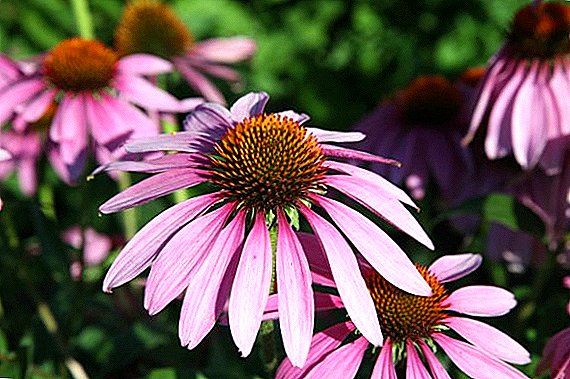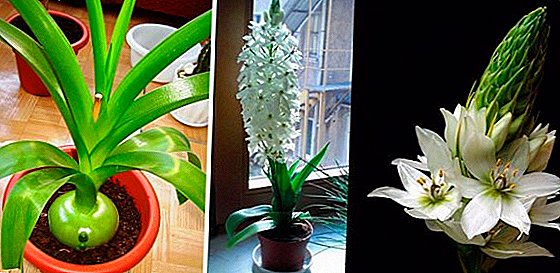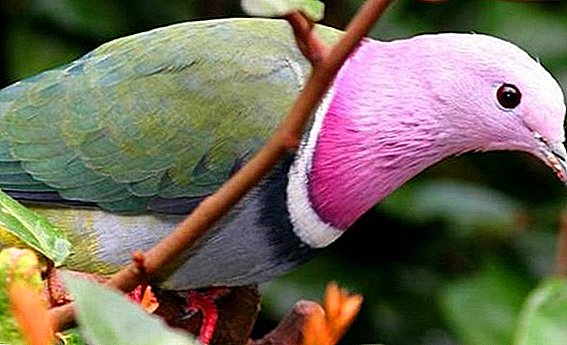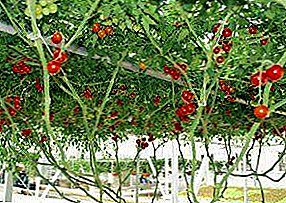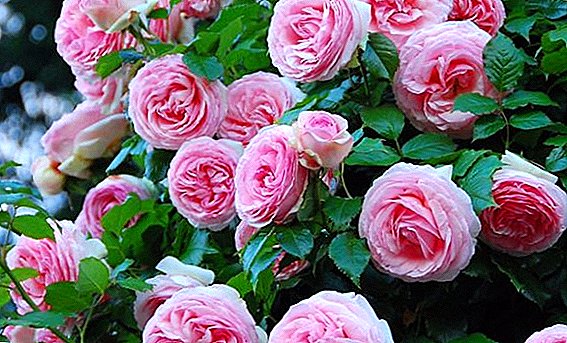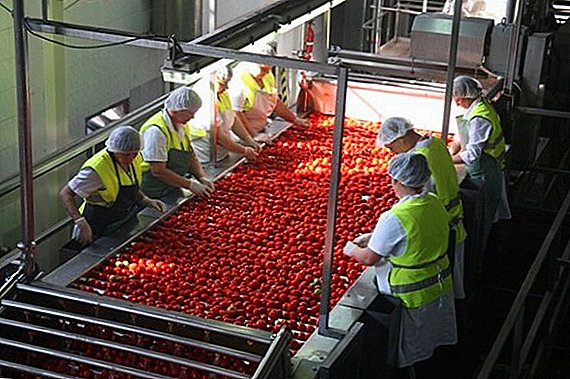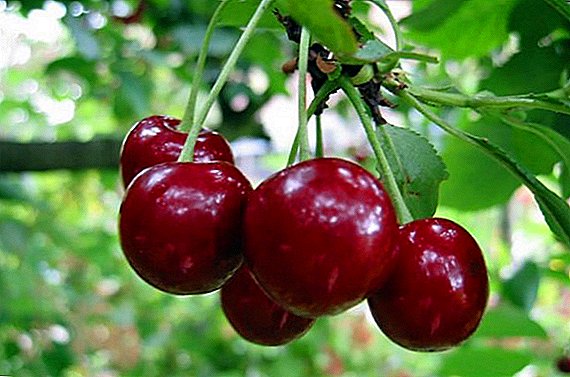 There are many diseases of cherries and cherries, which provide special measures for the prevention and treatment of diseases. Moniliasis or monilial burn is a disease that develops under the influence of fungal spores.
There are many diseases of cherries and cherries, which provide special measures for the prevention and treatment of diseases. Moniliasis or monilial burn is a disease that develops under the influence of fungal spores.
This disease is common on the Eurasian continent and almost every cherry or cherry tree has been affected at least once.
The tree looks burned, the flowers, leaves and green ovaries dry out. Therefore, we consider in more detail the description of moniliasis of cherries and cherries, how to treat it.
Description and implications
Moniliasis is a fungal disease that is also called gray rot and develops under the influence of ascomycete fungus. Monilioz often affects pome and stone fruit plants.  The main type of ascomycete, which was the cause of the stone fruit, is Monilia cinerea.
The main type of ascomycete, which was the cause of the stone fruit, is Monilia cinerea.
The consequences of developing moniliosis can lead to the death of the plant, if not in time to take measures to process the cherries. When a tree is affected by this disease, flowering and pollination can be delayed.
Recently, moniliosis has been actively developing, which is becoming harder to treat, if only individual parts of the plant could have died before, now the fungus can completely destroy the tree.
Did you know? Cherry in Latin sounds like Prunus Cerasus and it is likely that this name comes from the city of Kerasund, which is located in Asia Minor. There is a legend that the Roman warriors ate the sweet fruits of cherry trees and called them kerasunt.
Signs of appearance
In order to overcome the disease, it is necessary to be able to distinguish the first symptoms of the disease.
Among them are the appearance:
- immature mummified fruits;
- half-dead foliage on the branches;
- shrunken and darkened branches;
- soft areas on 3-year-old shoots where fungal spores have hibernated.
Large trees have a clear boundary where the healthy and diseased part of the plant is visible. Where the fungus settled down, drying occurs, blackening of parts of the plant. 
Causes and pathogen
As mentioned above, the causative agent of the disease is a fungus, which often infects the plant through the pistil of a flower. Wintering fungus occurs on the affected parts of the plant, as well as on fallen fruits, which have become mummified.
When the plants begin to bloom abundantly, the mycelium begins to abundantly spawn and fall on the stalk and the ovary already formed. Infected plant can and through the kidneys.
The defeat of flowering plants occurs at a low temperature, approximately at -2 ° C, and the defeat of the ovary at -0.5 ° C. Also favorable conditions for the active reproduction of the fungus is considered high humidity, abundant fogs and regular dew plant cover during the flowering period. There is a risk of the disease after a mild and wet winter.
Moniliasis manifests itself in two forms: fruit rot and monilial burn. Fruit rot settles on infected berries, when they fall, they become the source of moniliosis development next year.
A moniliac burn appears on the plants as a result of the penetration of the fungus into the wounds of the tree, which can occur under the influence of insects.
Resistant varieties
In order to protect your garden from the appearance of a fungal disease, it is recommended to buy varieties of cherries that are resistant to moniliosis.
Among them is the landing: 







Check out such varieties of cherries as "Vladimirskaya", "Black Large", "Kharitonovskaya", "Morozovka", "Uralskaya Ruby", "Turgenevka", "Lyubskaya", "Chernokorka", "Izobilnaya", "Mayak".Among the cherries that can resist the fungus, it is possible to distinguish the landing:
- Sasha;
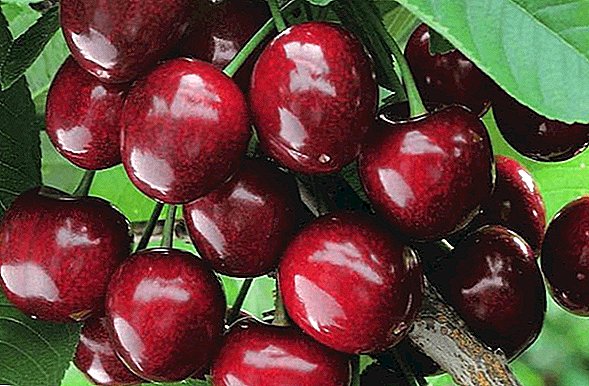
- South;
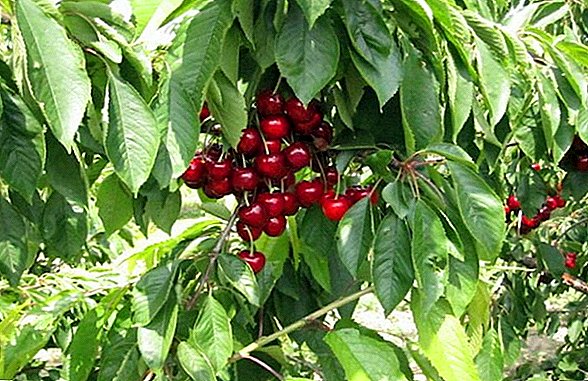
- Maca;
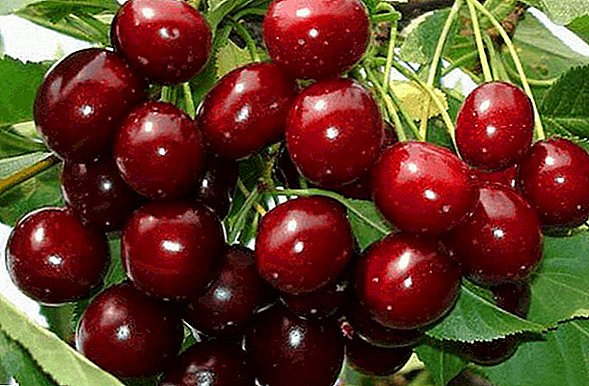
- Scarlet;
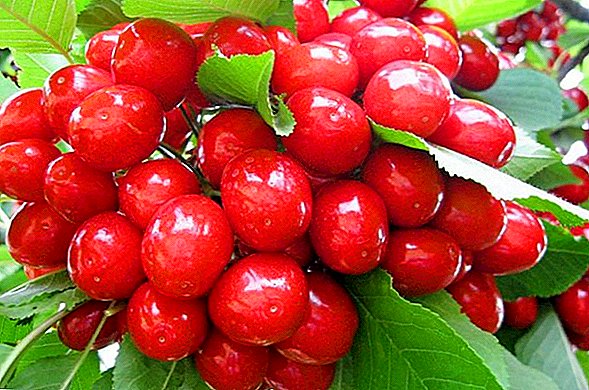
- Sorceresses;
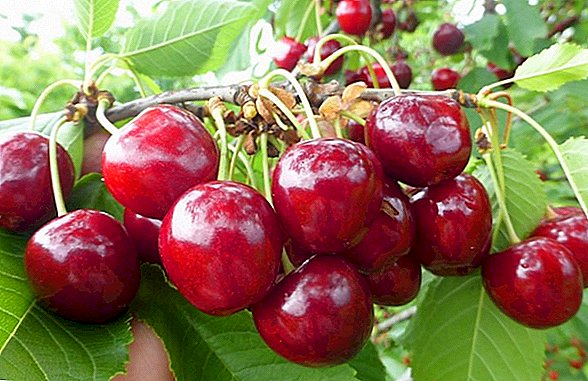
- The gift of abundance;
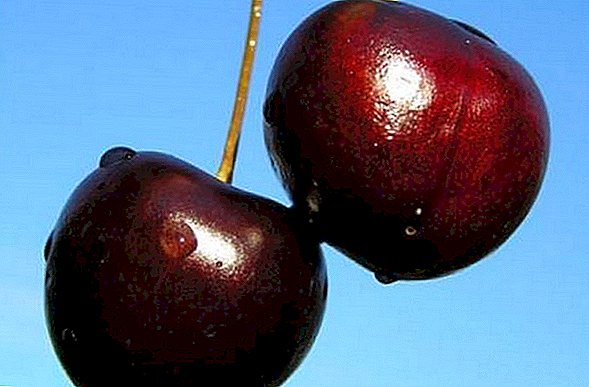
- Clear sunshine;
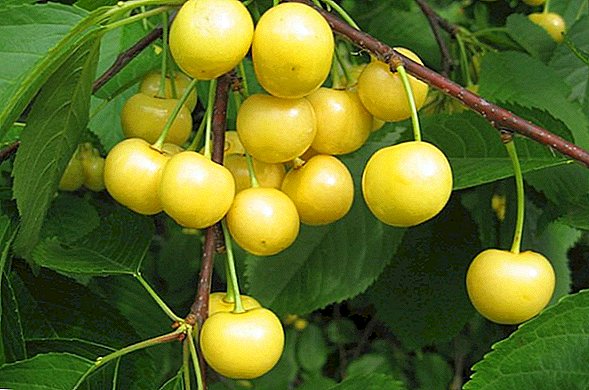
- Valery Chkalov.
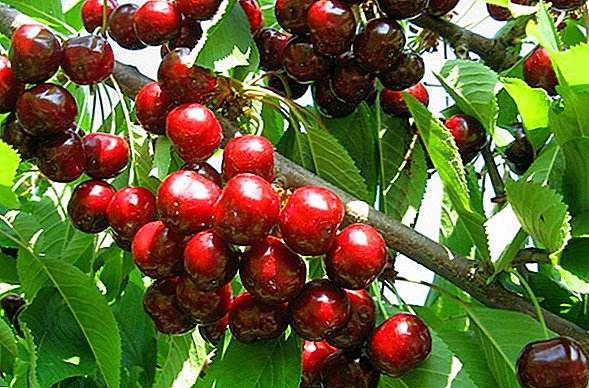
Healing and fighting
Since often inexperienced gardeners do not take any measures to eliminate dried leaves and flowering, believing that this process has arisen due to weather conditions, they miss precious time, which often leads to the final death of cherries or sweet cherries.
The period when the flowers are almost completely fallen, only the formed first ovaries begin to fall, are considered to be lost time for processing, that is, if you start to care for the plant after waiting for such symptoms, the result may not be fixed and the plant will destroy the fungus that has reached the peak of parasitism.
Therefore, the fight against moniliosis of cherries and cherries should begin precisely during the peak of flowering of the tree, when the disease is just beginning to develop. When you notice the first dried leaves and buds - it's time to act. It is likely that we will have to lose part of the harvest, but the rest of it will be preserved. Efficiency of processing depends on weather conditions.
Important! If after treatment it is windless, dry and warm, then you will get the maximum effect from spraying. If you make processing and it rains, then, most likely, no positive effect will occur, and the fungus will also continue to develop.
It must be borne in mind that if the plant has infected this fungus, then the berries after ripening should be immediately used, since they will already be infected and will not be stored fresh. It would be better to use them for making compotes or jams.
Chemicals
Chemical treatment of monilial burns of cherries for their treatment should be carried out before the buds of the tree begin to swell and in the period when they enter the phase of blooming.
At this time, it is recommended to treat the crown of the wood Bordeaux liquid, 3% solution. It is also necessary to whiten with lime mortar trunks of trees, in which add a little copper sulfate and antifungal agent.  Before the cherry blossoms it is necessary to process the crowns of trees with a 0.4% solution of Zineba.
Before the cherry blossoms it is necessary to process the crowns of trees with a 0.4% solution of Zineba.
If you have not processed the cherry before flowering, you should do this during the blooming of the buds, "Topsin-M" - 1% solution. This drug does not damage the stigma and pistils of buds, which is the main factor for the formation of ovaries.
Also, the use of the drug is possible for subsequent treatments. The recommended spraying interval is 2 weeks, you can do 2 more treatments.
The treatment with such preparations should be continued: "Zineb", "Kuprozan", iron sulphate.
When the buds begin to turn pink and immediately after the tree has faded, it is recommended to spray the plants at an interval of 2 weeks. To do this, you can use the "Cupid" and "Horus". Treatments should be performed according to the instructions on the packaging  If you cultivate varieties that are considered to be resistant to moniliosis, when plants start to bloom more, it is not recommended to use chemical processing this season.
If you cultivate varieties that are considered to be resistant to moniliosis, when plants start to bloom more, it is not recommended to use chemical processing this season.
Important! For eating fruits from treated trees can be a month after the last treatment.
Biological preparations
Biological preparations are a good alternative for treating affected plants during the formation and ripening of fruits, when chemical treatment is not recommended.
Preference is given to:
- "Fitosporinu-M". It is necessary to use this tool at the time when the tree has faded, as well as during the active formation of the ovary. For this recommended dosage in the amount of 40 ml per 20 liters of water.
- "Fitolavinu". Processing carried out in phases: flowering, when the tree fades, the formation of the ovary. As a preventive measure, it can be used for processing when the berries begin to ripen. Dosage: 40 ml of the drug per 20 liters of water.

Preventive measures
In order for trees not to fall ill with monilioz, it is recommended to buy resistant varieties. It is also important to consider the following points in the care of the plant, which will be the prevention of the occurrence of fungal disease in the stone trees:
- Planted plants should be at a sufficient distance from each other, so that the air does not stagnate and the trees are not in contact with each other.
- Plots for cultivation is better to choose on an elevation, so that the level of groundwater was no higher than 1.5 m from the upper part of the soil.
- The area should be well lit so that excess moisture evaporates faster.
- It should be timely pruning and thinning of the crown and rejuvenate old plants.
- Try to avoid mechanical damage on the trees.
- Timely remove weeds and shoots from the territory where the plant grows.
- In order for the plant to have a strong immunity and to fight well against the fungus, it is necessary to regularly fertilize and water the soil.
- In the spring, it is imperative to prune dried and affected parts of trees. Also pay attention to dead areas of bark and clean them in a timely manner to prevent the settlement and the growth of fungus.
- If you have identified shoots affected by moniliosis, you should immediately cut and burn them. It is necessary to cut off with the seizure of a healthy part of the plant by 15 cm.

Did you know? Fungi can not exist independently. They must be constantly fed by other sources, so they often parasitize on plants. An example of such a situation is the parasitizing of the fungus Monilia cinerea on cherry and sweet cherry trees.
Moniliosis of cherries and cherries is quite a serious fungal disease that can completely leave you without a crop, and in some cases even deprive the tree itself.
In order for monilioz not to touch your crop, you must follow preventive measures. And in the fight against the disease it is important to carry out timely treatment with chemical and biological agents.











